It was said that no one can be as wise as James Braid looked.
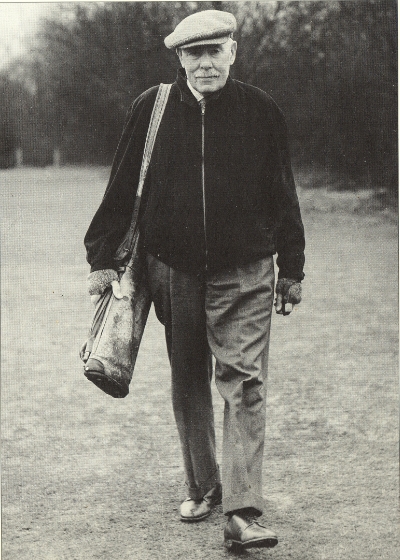
To think of Walton Heath must raise the memory of two men; the great James Braid and one of the best architects to ever practice the profession, Herbert Fowler. In the first eleven years of the 20th century Braid’s divine fury hit the mark as much as not. Taking up the position as Walton Heath’s professional in 1904, the rise of Walton Heath coincided neatly with Braid’s rush to legendary status. It is difficult to imagine how the course of Braid’s life and the status of Walton Heath would have been altered had Braid accepted the offer as Keeper of the Green at St Andrews shortly after the retirement of Old Tom Morris in 1903. As it was, he won The Open on five occasions, four while serving as the professional for Walton Heath Golf Club . Additionally, between 1903 and 1911, Braid won the News of the World Matchplay four times and a lone French Open. It is not unreasonable to suggest that if not for the Great War, Braid may have won his elusive sixth Open, thus catching Harry Vardon and sharing the honour of most Open victories.
By War’s end Braid was 50 years old, but there was still good golf ahead during James’ “sundown splendid and serene”. It is entirely possible that Braid’s most magnificent tournament was marked by a resounding defeat; such are the vagaries of top class golf. Braid easily qualified for the 1927 News of the World matchplay stages hosted by Walton Heath. After winning through four trying matches, The Times golf correspondent opened with “Braid is in the final! I believe there is someone else in it too!” Later, the scrivener stated “Whatever may happen now, Braid has done a great thing.” However, playing in unseasonably cold, rainy weather, the 57 year old Braid could summon no more magic and fell to the heavily favoured Archie Compston. On another occasion at the Sandwich 1938 Open, Patric Dickinson wrote “He had only a modest gathering. But he gave us an exhibition of sheerly classical golf I shall never, never forget. He was 68….But the ball seemed to go, somehow straighter than straight…and the putting was utterly steady. Braid holed the links in 74 and the news that he was playing well spread…there seemed to be as many professionals as lay spectators round the home green and they gave him their applause with true respect and sincerity. Perhaps I am romancing, but the grand old man appeared to me to blush, and stumped off the green like a little boy who has just been given his colours.”
While Braid may never have worked on Walton Heath, he did pen his name to a few courses which are a match for any architect’s resume: Gleneagles Kings & Queens, Pennard, Perranporth, Welshpool, Blairgowie and Hankley Common plus significant work at Carnoustie, St Enodoc, Brora, Wallasey and Sherwood Forest. How Braid found the time to eclipse the architectural feats of his Great Triumvirate rivals by quite a margin may well remain a mystery. It is, however, said Braid knew the train schedules uncommonly well up until the last day of his service to Walton Heath.
The admiration for James Braid was evident among the great and good of society. By the time of his death on 27 November 1950, Braid was an honorary member of Walton Heath, a director and shareholder in the club, the only honorary member of the Parliamentary Golfing Society and most cherished of all, elected as an honorary member of the Royal and Ancient Club. Despite Braid’s ability to easily move between social classes, it was never held against him by the working class. Not too dissimilar in being a founding member of the British PGA, it was Braid who insisted the local Walton-on-the-Hill villagers organize to petition for the formation of an Artisans Club associated with Walton Heath GC. Braid trained many artisans as assistant professionals who then went on to become head professionals. Gus Faulkner was one such recipient of Braid’s generosity of spirit. Faulkner came under the tutelage of Braid in 1910 and went on to become the pro at Pennard which may help explain why Braid was engaged as its architect. Of course, Gus' son, Max Faulkner, was the Champion Golfer of the 1951 Open held at Royal Portrush. As a measure of the Artisans' gratitude, Braid held the position of Honorary Captain of the Walton Heath Artisans Golf Club from its founding in 1906 until his death.
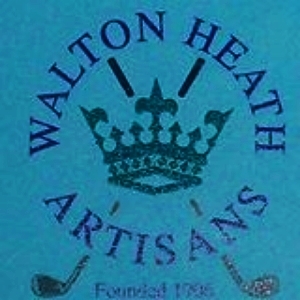
James Braid is buried at St Peter's in Walton on the Hill, less than a half mile from his home on Meadow Walk and not more than a par 4 to the 1st tee.

The modest homes on Meadow Walk as the lane looked in Braid's day. Braid's house, Earlsferry, named for his place of birth is just out of shot to the right. In an ironic twist of fate, there is strong evidence to suggest that James Braid was actually born just over the village border in Elie.
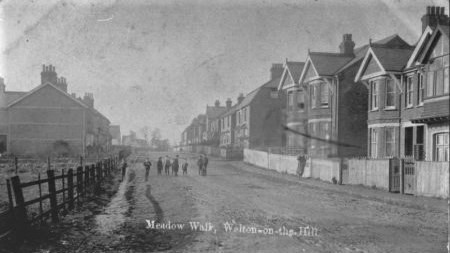
A simple stone memoralizing the wife of James Braid, Alice, more than the man himself. I believe the club tends to Braid’s stone and ensures there is heather in place…fitting.

Herbert Fowler first came to the fore as a county cricketer for Somerset. An unusually sizable fellow, Fowler’s reputation was as a banger just as it was in golfing circles. Born in 1856 to a family of substantial means, Fowler eventually took root in Somerset living as an honourable banker come farmer. During this time in Taunton, Fowler was introduced to golf at Westward Ho! and eventually became proficient. I say proficient, but truth be told, Fowler reached the final 16 of the 1891 Amateur held at St Andrews. Before the Walton Heath commission, Fowler had steadily made a name for himself as a fine golfer and became a member of the R&A and The Honourable Company of Edinburgh Golfers.
At the same time Fowler was climbing the golf hierarchy, at some point in the 1890s the family fortune dwindled to the point where Cosmo Bonsor, Fowler’s well off brother-in-law, advised Herbert to declare bankruptcy. In addition to this advice, it seems obvious that Cosmo was the driving force in eventually hiring Fowler to design the course for the newly formed Walton Heath Golf Club. It is also clear that Fowler was given time (he moved to a villa across from the club in 1902), money and ample land to do the project proud. In 1903, before completing the project, Fowler’s immediate money worries were relieved. The directors of the club appointed Fowler to the posts of Managing Director (he held this position for nearly 40 years) and Club Secretary. It is also worth noting that when the Haskell Ball was set-up in the UK Fowler was a Director of the company.
With his connections, it isn’t surprising that work continued to come Fowler’s way, though one doesn’t get the impression that he ever completely conquered his financial difficulties. Fowler eventually designed some of the most revered courses in England and one in New England, yet his first effort remains the most iconic despite perhaps only six holes remaining as originally designed. In addition to a much altered Walton Heath Old, Herbert designed Westward Ho!, Saunton East, Berkshire Red & Blue, Beau Desert, Delamere Forest, Blackwell, Walton Heath New and appropriately, Eastward Ho! Not a bad resume for cricketer!
Darwin thought Herbert Fowler “an instinctive despot with a touch of genius”. Though part of the great class of British architects which emerged in the early years of the 20th century, Fowler stood apart from Park Jr, Colt, Mackenzie and later Alison and Simpson. Bernard Darwin thought Fowler may have been the most audacious, skilled and creative of all the golf architects. His courses have an intensity all their own, none more so than Walton Heath. Some might say the course is austere, but that would be a disservice to the beauty of Walton Heath. It is easy to see why the heath was chosen as a site for golf even if it took Fowler a few years to tease the character from the terrain. Of particular interest are the bunkers (Fowler’s graves). Once again Mr Dickinson said it best. “A remarkable feature of Walton Heath is the way its bunkers, particularly those placed strategically in the fairway – rear their ramparts up. They are curiously, aggressively artificial looking…They are uncompromisingly BUNKERS… These bunkers are positive, direct, and need make no comment upon such as enter them.”
Walton Heath is nearly as famous for its membership roll as it is for the courses. Royal and parliamentary connections include a multitude of dukes, lords, knights and honourables, a rather large contingent Members of Parliament, leading lawyers, clergy and four Prime Ministers (most famously Winston Churchill). In 1935, King Edward VIII, later the Duke of Windsor, became the club’s first Captain and held that post the day he abdicated the throne on 11 December 1936. All the above, incredible as it is, surely, the golfers of Walton Heath would have considered the retiring, unassuming, Ernest Holderness as the club's most prized member…and this knowing Bobby Jones was member! During his 55 years of membership and while holding down a quite senior civil service post, Holderness won the Amateur in 1922 and 1924 (the year he became a baronet). Sadly, due to work responsibilities, Holderness only played in three Walker Cups, all on home soil. Befitting the status of Sir Earnest, he was a co-founder of the Surrey County Union which then quickly supported the emergence of the English Golf Union in 1924. Many of the copious medals won by Holderness are on display in the club house and the main dining room is named in his honour.


The other end of the social spectrum...how times have changed!
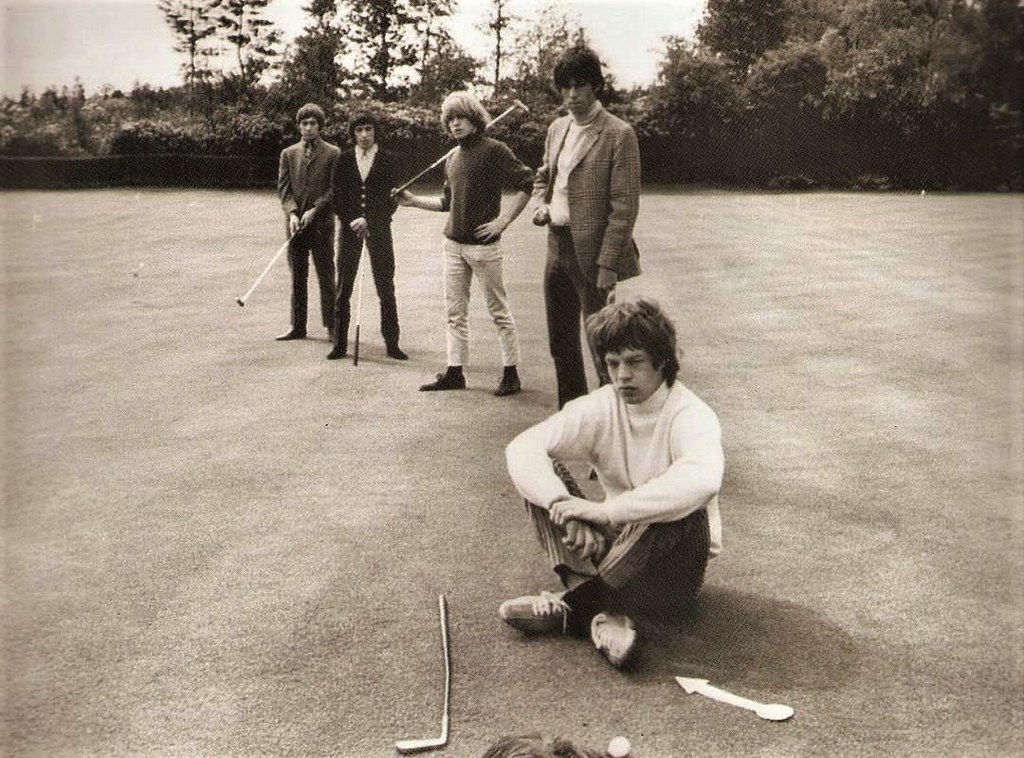
Mentioned previously, near as I can reckon, the current course has only six original Fowler holes remaining; 2-4 & 16-18. However, many of the revisions were likely by the hand of Fowler as he was on the board when changes on the back 9 occurred; including the new 10, 11, 12, 13 & 14. It is difficult to imagine Fowler allowed someone else to do the designing while he was in the driver seat. I think Tippet (the Secretary after Fowler had a heart attack) designed the new 5-8 (using Fowler's 6th green for the new 5th). Of course 8 and 9 were later changed in the early 1970s due to the construction of the M25, but I am not sure who was responsible for the work. Walton Heath was owned for much of its early existence by the Carr family (publishers of News of the World). Not long after selling the company (and Walton Heath) to Rupert Murdoch in 1969, there was talk of the course being converted into a resort complex. A group of members saved the day and the course by purchasing the property from Murdoch. One can't help but wonder if discussions about selling the course left it open to its degridation by the M25.
The 5th & 6th were originally par 3s. Just before WWII they were combined to create the current 5th, thus requiring a new 6th and 7th (holes still in play). That also means the old 7th is no longer. The current 8th tee left of the 7th green was put in play when the M25 was built. It is about half way down the original Fowler 7th. In the mid 80s a plan to move the entire course to the other side of Dorking Road eventually fell by the wayside. It meant scrapping the 1st, creating a new par 3 after the 10th and converting the short 11th into a par 4. After a few years the members decided the new holes weren't very good and reinstated the old holes! It was then that the first was made into a par 3 - the last major change to the course.
1937 Aerial

The house.

Different times. 1913 News of the World, which was a huge tournament back in the day. I would say it was equivalent to a major in the UK much the same way the Western Open was in the US.
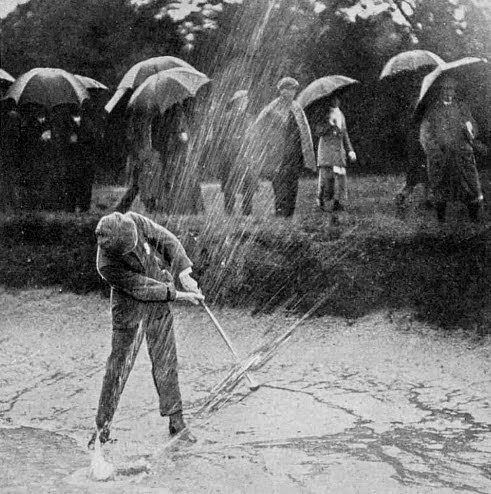
The long one-shot opener feels like an annex to the heath and is entirely unsuited for the noble journey that is Walton Heath. So we quickly move to second where a good drive will find the bottom of the valley. In Braid's day the valley was strewn with rough. The steeply uphill approach will often be into a potent headwind.

This 1937 aerial clearly shows (upper left) the rough covered valley.

The hazards pop-up like a children's book on holes 2-4. The difference in shaping between the original holes and newer holes is remarkable. There is certainly a primitive component to these holes which is shared with the New Course. While theoretically driveable, it is possibly astute to lay-up on #3...high anxiety predicaments punctuate the landscape.

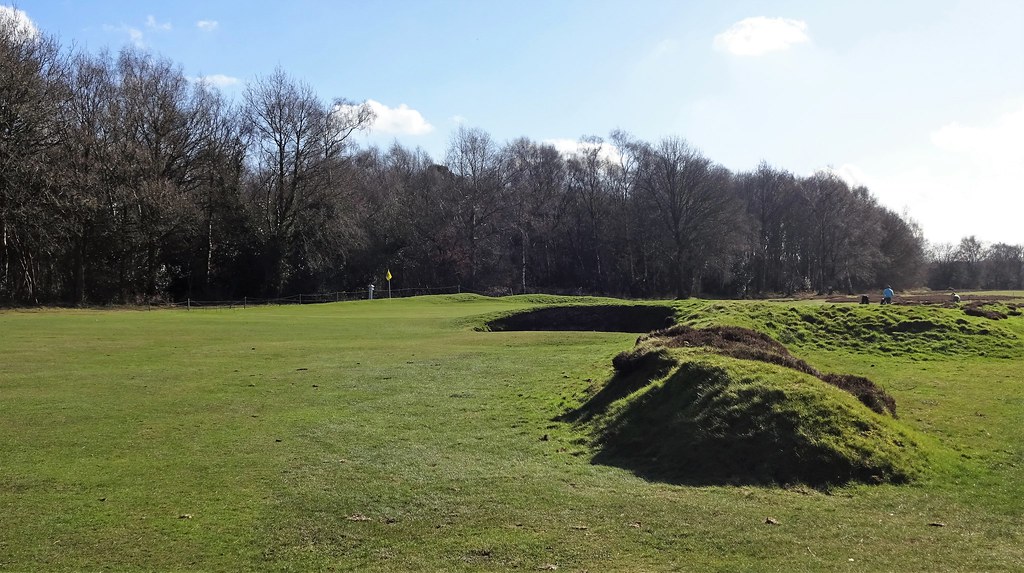
Taken from the rear of the green.
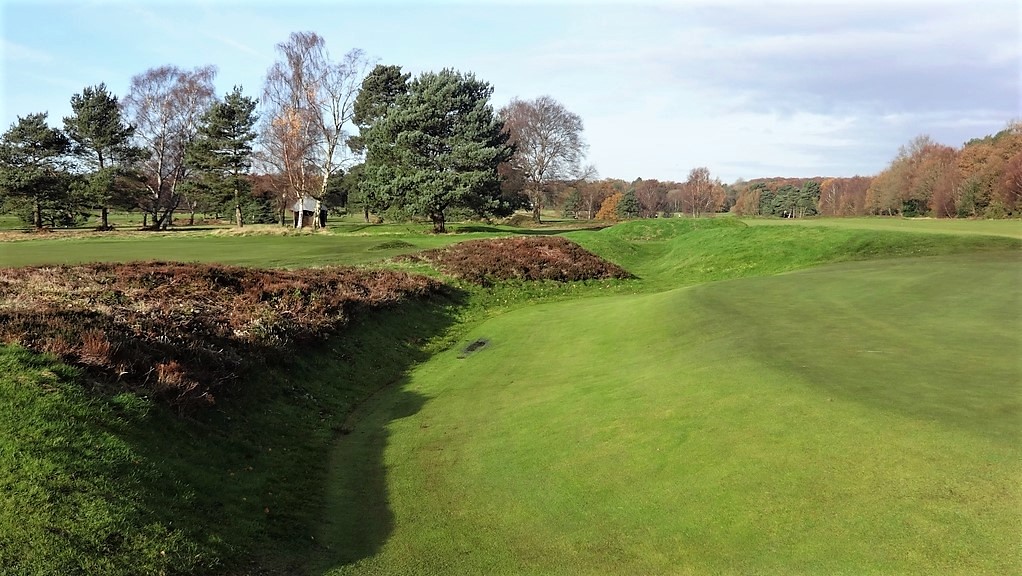
One of the outstanding aspects of playing golf in England is the close connection with the history of the country. Golf in England exploded during the Victorian era and much of that history is associated with this period. Behind the 3rd green and near the 4th tee is an odd post erected likely in 1861 as boundary marker. However, upon looking into the matter I find that this (and a few more posts between the golf course and Banstead Heath) is a coal duty post erected by the Corporation of the City of London. There is an approximate circle surrounding Charing Cross from 20 to 30 kilometres (the then area of the Metropolitan Police District) at which the posts are set to mark the boundary for duty owed on coal when entering the district. Whatever we may think of Victorian sensibilities, they knew how to build things with a bit of flair. This Grade II listed (!) post is made of cast iron and is wonderfully maintained by the City of London.
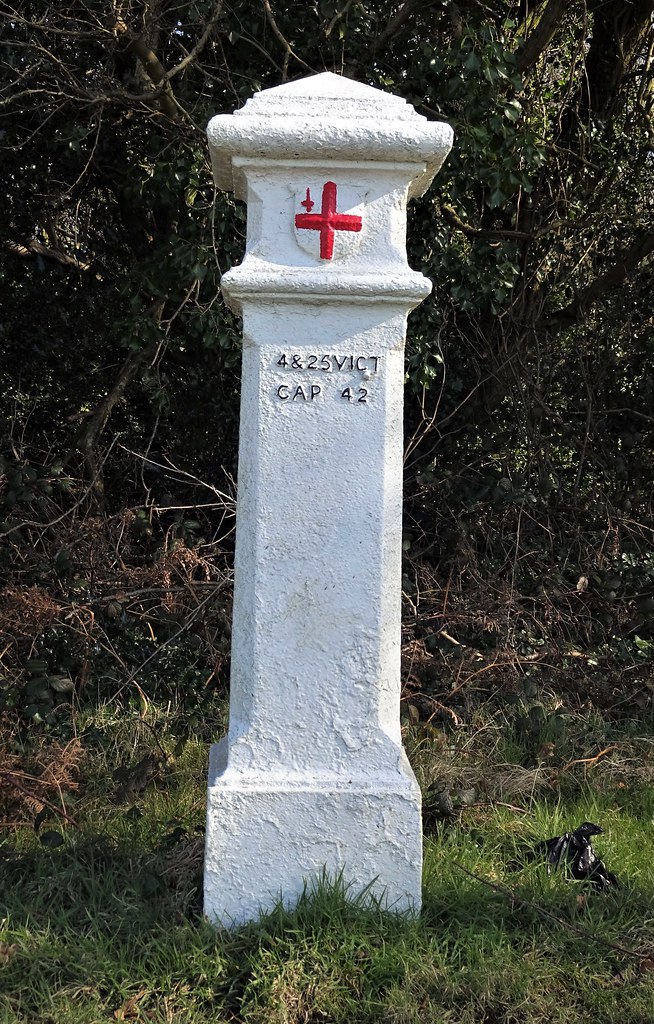
The fourth is more of the same but with an additional 150 yards tacked on for our enjoyment.
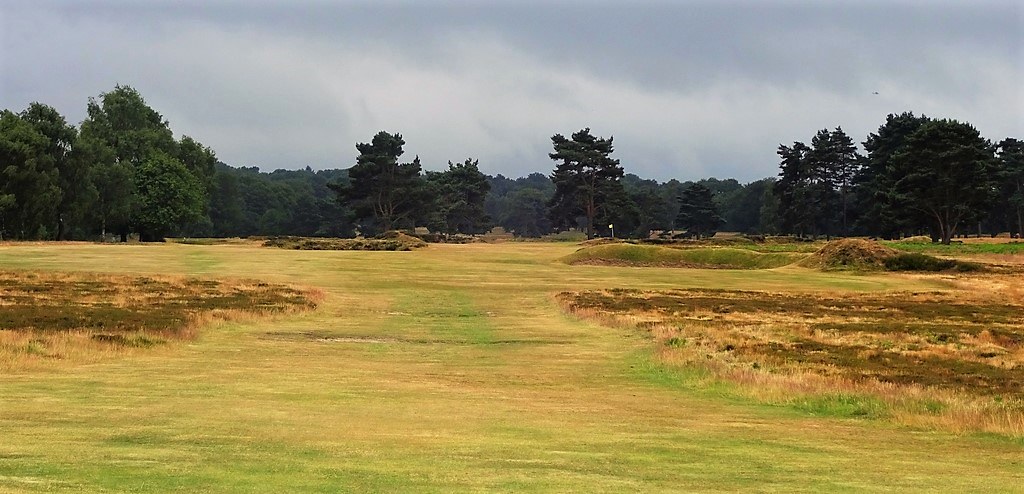
Looking back toward the tee.

This hazard just shy of the green demonstrates the architect's mastery of form and function. The golfer in the photo is on the 5th tee.
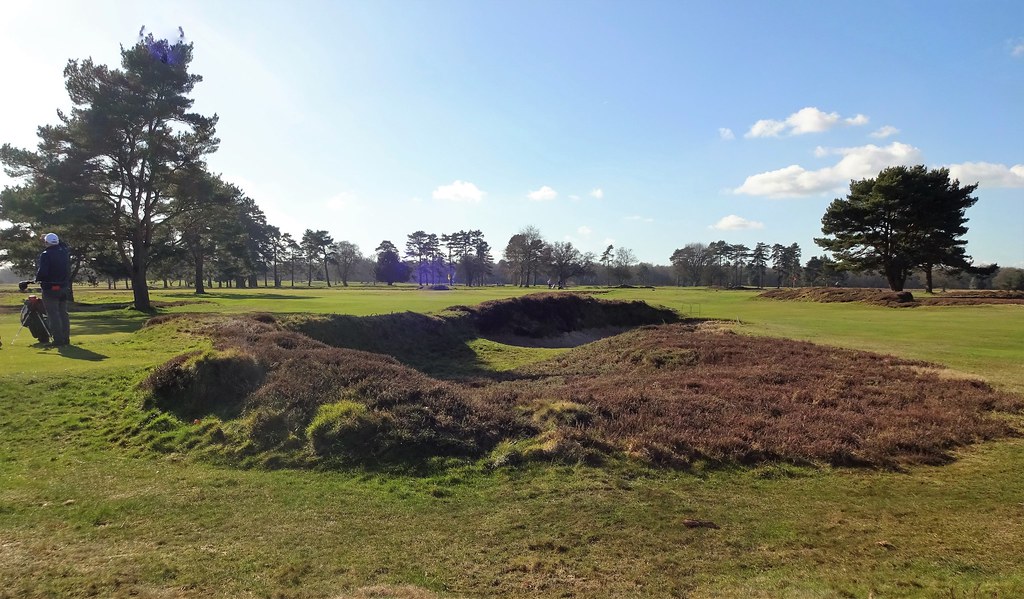
More to follow.
Ciao